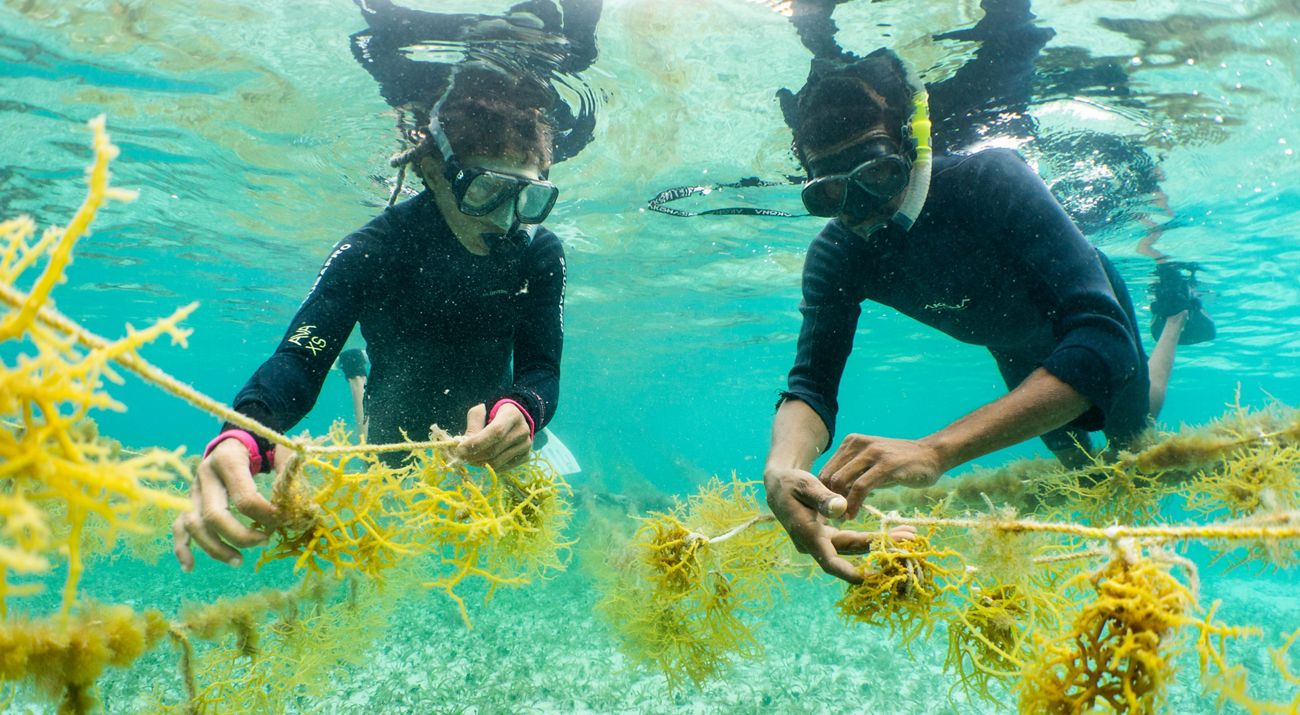Belize Seaweed Aquaculture: Situation Analysis and Technical Guide

Belize's seaweed aquaculture industry is in its infancy, with production methods, with supporting infrastructure, regulation, and markets still in development. However, there is a great deal of interest in the sector for its economic and environmental benefits. As fisheries and wild seaweed stocks both face challengese due to overharvesting and climate change, seaweed cultivation could provide an alternative source of income for a large portion of the country's coastal communities, which account for about 40% of the country's population. Additionally, seaweed cultivation can offset the local impacts of ocean acidification, improve water quality by filtering out excess nutrients, and provide habitat for aquatic animals.
To guide the sustainable growth of seaweed farming in Belize, TNC has developed two new documents. The first is a situation analysis, which explores current and potential production and markets for farmed seaweed in Belize as well as social and environmental benefits, conservation challenges, and recommendations for sustainable management. This analysis is accompanied by a technical guide, which outlines considerations for sustainable seaweed farming and details on the technical aspects of the submersible method of cultivation.